The Ficus Tree, also known as a Ficus Plant, Weeping Fig, or Benjamin Fig, is grown most often as a houseplant, rather than as an outdoor tree. The ficus tree is a popular houseplant for its beautiful foliage and unique shape.
They are native to tropical climates and thrive in warm weather. Ficus trees are an amazing plant that has been around for thousands of years. They are also known as weeping figs because they produce a large amount of watery sap.
- Related: Types of Houseplants
If you want to learn how to care for your ficus tree, then keep reading. This guide will teach you everything you need to know about growing and caring for your ficus tree.
Ficus Plant Overview
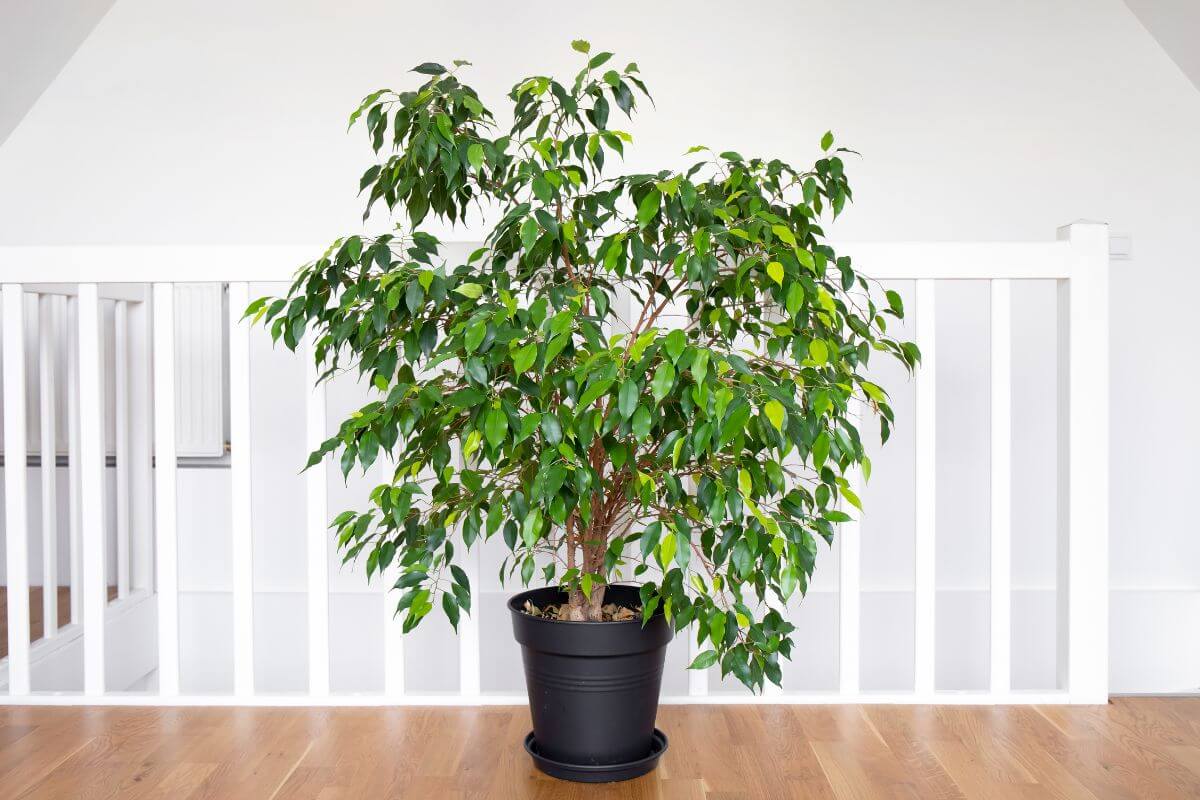
It is an evergreen perennial broadleaf tree that is native to tropical and subtropical climates in Asia and Australia. A member of the Moraceae family, the Ficus Benjamina is a rarity among trees as it tolerates low light conditions often found in indoor locations rather well.
Elegant slender branches arch their way up from the tree trunk and host dense dark green leaves. A happy Benjamin fig will feature generous amounts of leaves, adding to its appeal. It may shed the leaves, however, if it is particularly stressed.
The ficus genus have fast growth. Indoor plants may be pruned to prevent them from growing too tall as the average indoor height will range from three to six feet. In outdoor tropical climates, these trees can reach sixty feet in height and are sometimes pruned to function as hedges.
Their trunks may be braided to increase their decorative appeal, particularly for indoor locations.
This genus of woody plants has approximately 850 different species. The United States Forest Service writes that the roots of the Ficus grow quickly and are invasive.
They can create structural problems for sidewalks, driveways, and patios over time. It is considered too large for residential planning and should be limited to use as a hedge.
One great thing about the ficus plant, other than its decorative value, is that it cleans the air. It has high removal ratings for toxins, such as benzene, formaldehyde, and trichloroethylene.
Numerous cultivars (ficus varieties) exist with varying patterns of leaf coloration. Among more well-known examples are:
- Ficus Benjamina – With narrow, green, glossy leaves, it will grow into a small tree. The plant does not love the cold or shade. There are several variegated varieties, such as the Ficus Benjamina variegate or the Ficus Benjamina Starlight.
- Ficus Elastica – Also known as the variegated Rubber Tree, it has very large glossy thick green leaves. Among several varieties, we find Ficus Elastica Robusta and the Ficus Elastica decora.
- Ficus Lyrata – Known as the fiddle leaf fig tree, it has rather large leaves shaped like a violin that can reach eighteen inches in length.
How to Care for a Ficus Plant
The Ficus tree grows well indoors in containers with a soil bed of potting mix. It should be positioned in bright indirect light or a sunny zone with partial shade. During the growing season, watering should be regular and then reduced during the fall and winter.
Once the final frost has come and gone, the ficus can be placed outdoors for the warm season. They should be returned to their indoor location when the weather turns cold.
Exaggerated leaf drops can be attributed to multiple causes including pest infestation. This is a plant that does not appreciate being moved too often from one position to another.
Soil for a Ficus
A good potting soil that is fast draining is the best choice for the ficus. Pots should have a good number of drainage holes at the bottom. These trees do not need soil that is rich in organic matter or nutrients.
Soil pH levels should ideally be between 6.0 and 6.5 for ficus trees and plants. Soil with a lower pH will provide too much acidity for the tree, and it won’t grow as successfully.
Loam soils are fine, whereas clay soils tend to become soggy and waterlogged, especially if outdoors. Waterlogged soil should be avoided to prevent root rot. Sandy soils will provide excellent drainage, but will require more watering because they do not retain adequate moisture.
Light for a Ficus
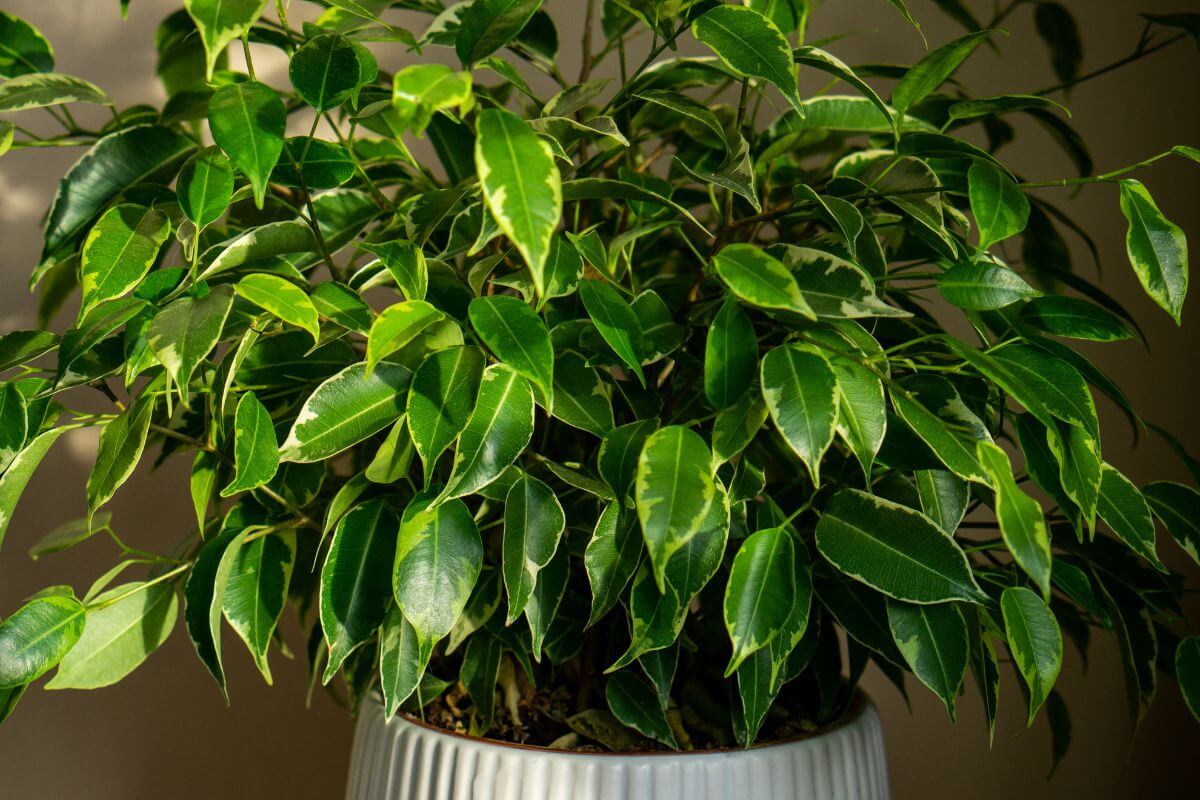
The Ficus tree needs bright light, but indirect light. They can receive a limited amount of direct sunlight in the early mornings. Its natural habitat features a naturally shady environment with lots of light.
As the Ficus doesn’t like to be moved around, you should find a well-lit spot and leave it there.
Water and Humidity for a Ficus
This plant will require moist soil, so be sure to water regularly. However, don’t overwater. A Ficus left standing in water will begin to drop leaves and eventually develop root rot.
Your watering schedule should be regular and consistent. They are quite sensitive to changes in moisture. In their natural environment, they will drop leaves at the beginning of the dry season.
This plant loves high humidity. If their environment becomes too dry, they will begin to lose their leaves. A humidifier can help increase indoor humidity, especially if you reside in an arid climate.
The soil bed surrounding the rubber plant’s base should remain moist. A good misting of the tree’s leaves will help avoid the tree drying out.
Temperature for a Ficus
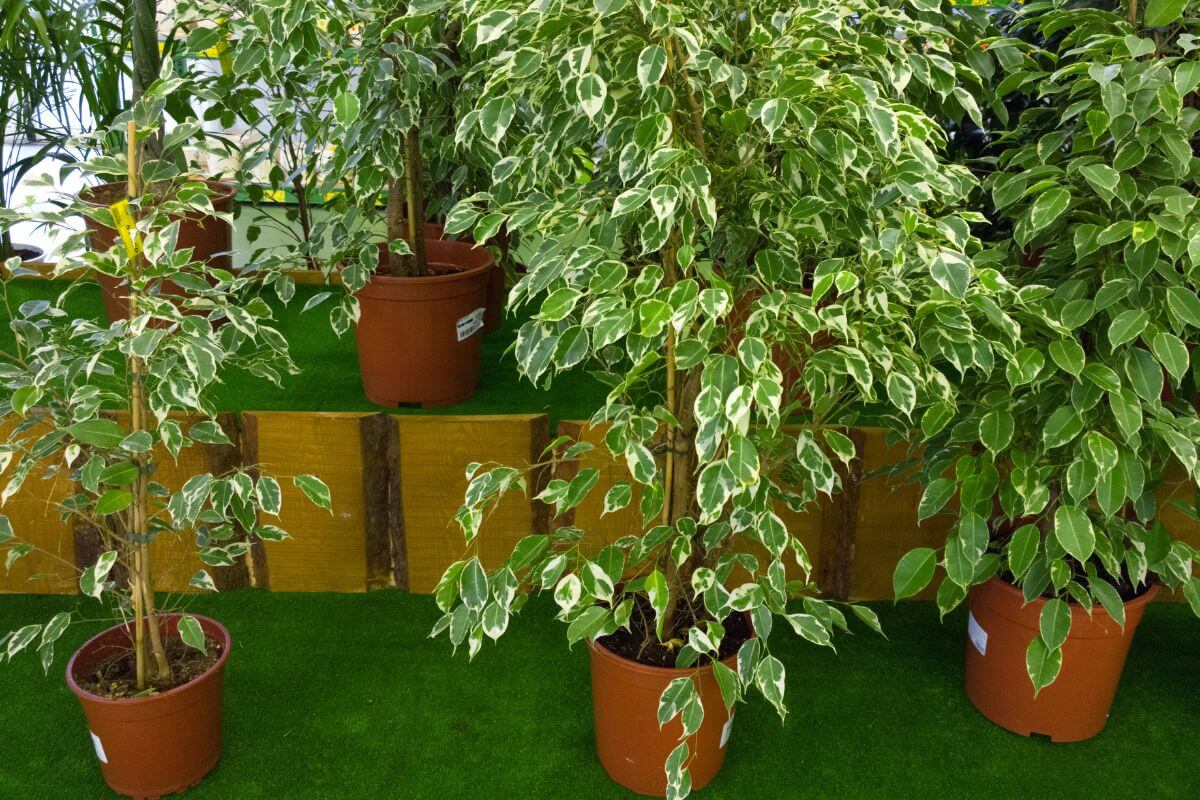
Ideal daytime temperatures for the Ficus should sit between 75° and 85° Fahrenheit and at nighttime between 65 and 70°F.
During the summer months, it is recommended not to use strong air conditioning that causes your indoor temperature to fall under 70°F. This tree is sensitive to cold and should be protected from cold drafts.
Fertilizer for a Ficus
The Ficus Benjamina is a heavy feeder and requires generous fertilization during the growing season. Slow-release fertilizing pellets can be used at the beginning of the growing season.
A healthy ficus tree grows quickly and should be fed at least once a month during the spring and summer. In the winter and fall months, feeding can be reduced to once every two months.
Should your indoor tree lose its leaves despite proper ficus tree care with good lighting, humidity, temperature, and fertilization, it may need a magnesium and manganese supplement.
Ficus Tree Pruning and Repotting
As a fast growing plant, your indoor ficus tree should be repotted annually.
The pruning or trimming of Ficus trees is necessary if it begins to touch your ceiling, or you want to shape it somewhat.
Make sure to prune the plant when it is not growing. When it is dormant in winter it will be less at risk of injury from pruning.
Always trim dead branches and remove any dead leaves to avoid fungal infections. This can be done year-round.
Propagating the Ficus Tree
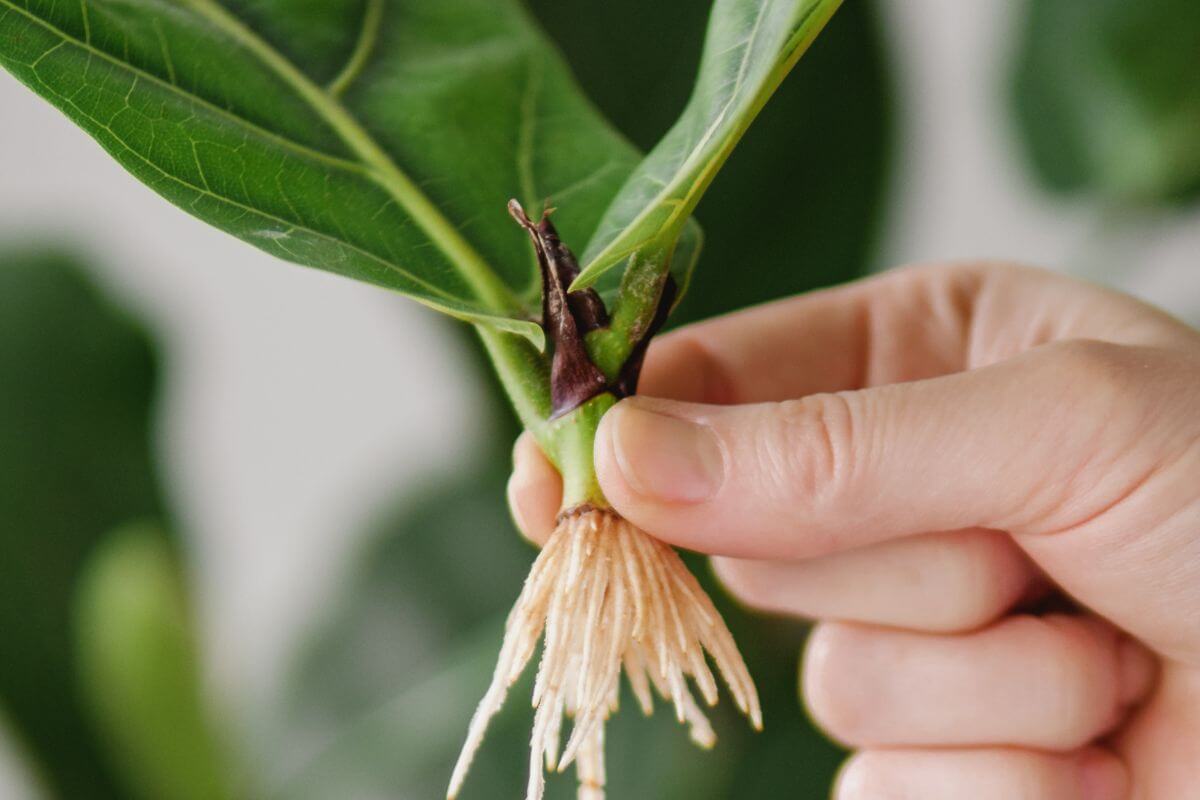
This tree can be propagated using cuttings, even without the application of root hormone. Take your cutting during the spring months when it is warm and moist.
The ficus is rarely cultivated using seeds. Most houseplants will not produce either fruit or seeds.
How to Propagate the Ficus Tree
- Use a three-to-five-inch cutting that has a minimum of two sets of leaves from the tip of a branch in good health. Cut approximately ¼ inch below a set of leaves. Remove the leaves from the lower half of your cutting and coat the end with rooting hormone if you wish.
- Place the cut end into a container full of peat moss that is moistened. Cover the container with the cutting with a large plastic bag. The plastic should in no way touch the cutting. Bind the bag around the bottom of the container.
- Place the container in a location that has bright indirect sunlight. The temperature should remain above 65°F. Mist the cutting daily and kepp the soil moist.
- Within two to four weeks the cutting should grow roots. You can now slit the plastic to help the plant acclimate to the environment.
- At six weeks, you can transplant the new young plant to a pot approximately six inches in diameter. It will continue to grow under your watchful eye and care.
Ficus Tree Toxicity and Pets
The ficus tree is toxic to dogs, cats, and horses, and can present a problem for people suffering from allergies to latex. The weeping fig plant contains latex and should not be kept in the same room or living space with latex allergy sufferers.
Typical signs of poisoning for your pets include gastrointestinal distress and irritation. If you suspect or are certain that your pet has ingested ficus benjamina, contact your veterinarian immediately.
Ficus Tree Pests, Diseases, and Problems
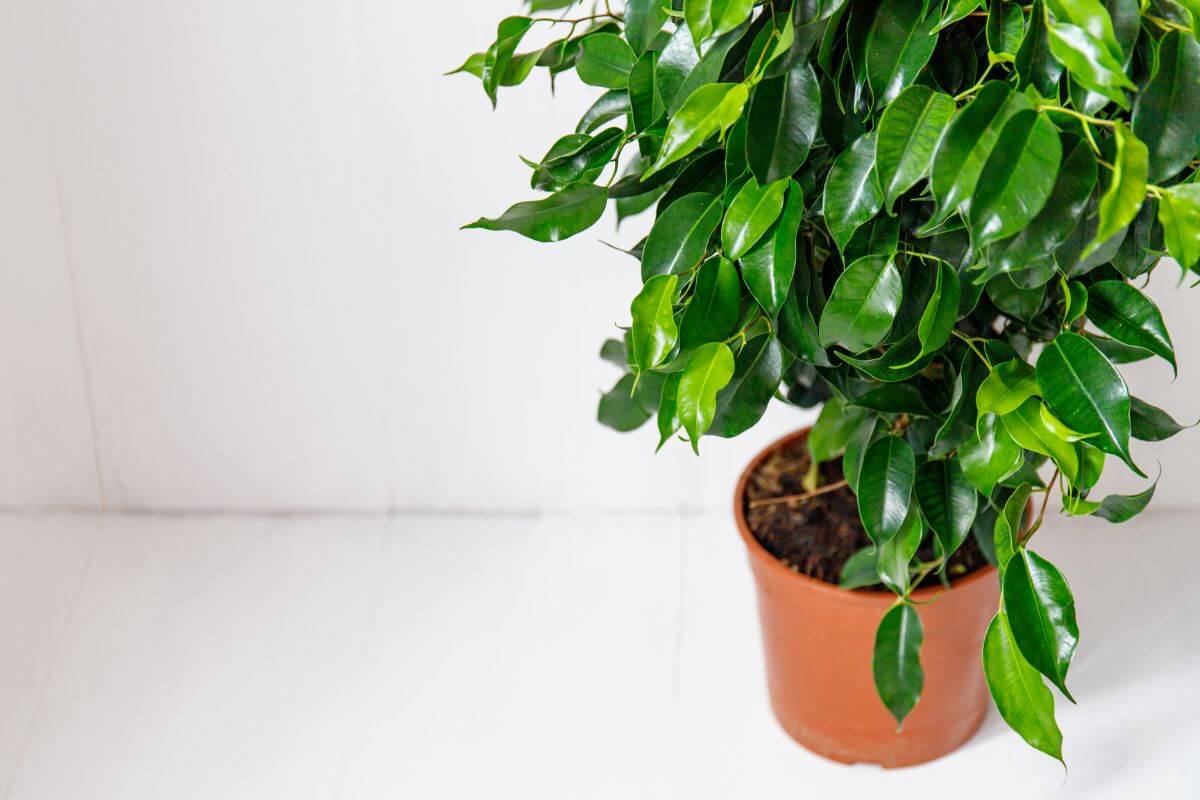
The most common type of pest issue for the ficus is the scale insect. This pest has the appearance of a fishy, waxy mass stuck onto a stem or leaf. Scale insects should be scraped off. You can do it with a fingernail, or you can apply neem oil or insecticidal soap.
Ficus plants also attract spider mites and aphids which can also be treated with insecticidal soap, although these pests will probably require more than one treatment.
It is normal for ficus trees to shed leaves. However, if they shed abnormally large amounts of leaves, something may be stressing your plant. Things to consider are:
- Has the plant been moved?
- Has it recently been repotted?
- Is there sufficient light?
- Has it been over or underwatered?
With a bit of questioning, you can usually hone in on what’s making your ficus unhappy.
Ficus Tree Care Final Thoughts
When cultivated as a houseplant, the ficus tree may grow more slowly than the outdoor version. However, with good care, these trees can live for decades and will make an impressive addition to any home or office as an ornamental plant.
Learn more about other popular houseplants:
- Dragon Tree (Dracaena Marginata) Care Guide
- Corn Plant (Dracaena Fragrans) Care Guide
- Dumb Cane (Dieffenbachia) Care Guide
- Ivy Plant Care Guide
Ficus Tree Care FAQs
Is the ficus an indoor plant?
Yes! Ficus plants are very easy to keep indoors year round. They prefer warm temperatures, but tolerate cooler conditions when grown outside during winter months. Indoor growing requires less water and fertilizer than outdoors.
How long do ficus plants live?
A mature ficus tree can live up to 100 years. A younger specimen might only last 20-30 years before becoming too old to thrive. With proper care, you can enjoy your ficus for decades.
Do ficus trees clean the air?
Yes, ficus trees are one of the best air purifying houseplants available today. Ficus trees have shown to remove pollutants such as formaldehyde, benzene, trichloroethylene, and carbon monoxide from the air we breathe.
Why is the ficus tree dropping leaves?
Ficus trees drop leaves to show that it’s being stressed, which could be for a number of reasons. It could be that the plant has been overwatered or underwatered. There could also be a lack of light or it’s been exposed to a drastic temperature change. Check for any pest infestations causing the leaf drops. If you’ve just repotted or moved it indoors/outdoors, the ficus could still be adjusting to its new environment.


